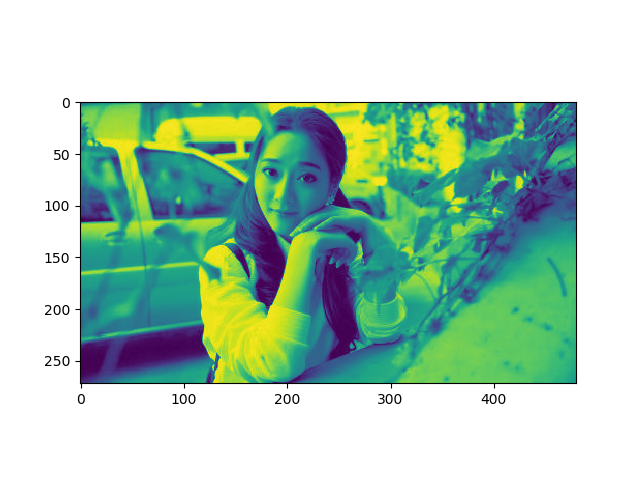1.图像的数组表示:
from PIL import Image from pylab import * from numpy import * im = array(Image.open('E:Pythonmeinv.jpg')) print(im.shape,im.dtype) im = array(Image.open('E:Pythonmeinv.jpg').convert('L'),'f') print(im.shape,im.dtype)
运行结果:
(272, 480, 3) uint8 #第一个元组中数据表示图像的行,列,颜色通道数 紧接着的字符 #串表示元素的数据类型 (272, 480) float32
2.灰度变换
from PIL import Image from pylab import * from numpy import * im = array(Image.open('E:Pythonmeinv.jpg')) print(im.shape,im.dtype) im = array(Image.open('E:Pythonmeinv.jpg').convert('L'),'f') print(im.shape,im.dtype) im2 = 255 - im #对图像进行反相处理 figure() imshow(im2) im3 = (100.0/255)*im +100 #将图像像素值变换到100——200区间 figure() imshow(im3) im4 = 255.0*(im/255.0)**2 #对图像的像素值求平方后得到的图像 figure() imshow(im4) print(int(im4.min()),int(im4.max())) #输出像素的最大和最小值 show()
图1:图像的反相

图2:像素值变到100——200

图3:像素值的平方
